
Guide to interviewing AI Agents
What makes an AI Agent different from the typical chatbots you’ve used in the past? Is the impact on ROI really that high?
Learn More

Unless you’ve been living under a rock, you’ve no doubt heard about the importance of personalization when it comes to the customer experience (CX). Not only do people today expect it, automated interactions personalized to the individual is what tips the scale in your brand’s favor. It allows brands to make every single person feel like a VIP when they interact with you, and this earns customer trust, enhances affinity for the brand, and builds long-term loyalty.
The key to personalizing your automated customer experience (ACX) is to use all the data that’s available to you — past interactions, purchases and transactions, orders in queue, personal and account information, and demographics — to anticipate customer needs and make it as easy as possible for them to get things done. And with the right customer service automation platform powering your interactions, customers can do less. The conversational AI does the work, and people can self-serve and resolve their issues fast and without fuss.
But how does this work behind the curtain? And how does this apply to brands in different industries? Let’s first examine a key feature to powering personalization at scale, and then we’ll show you how personalized ACX applies to customer goals and intents that vary widely depending on the industry.
If you have experience building or working in automation platforms, you’ll likely know what a List Option Block (LOB) is. Briefly, a LOB offers a static list of selectable suggestions to manually define options to the conversational AI.
But technology is advancing quickly. We’ve seen AI capable of synthesizing pages and pages of information into a clear, concise, and accurate summary with a point of view, or transform a few bullet points into a fleshed out piece of content in a matter of seconds. Generative AI is only getting smarter, and static suggestions and manual inputs are becoming practice of the past.
Now, automation builders and managers can tap into dynamically generated options (hence, Dynamic List Option Block or DLOB) — meaning personalized information is automatically pulled from the relevant data pertaining to your customers (like a JSON string) and presented in the chat interaction. Anticipating your customers’ next step based on the data available to you is a first class ticket to personalized CX that goes above and beyond the competition. And, bonus, you’ll be reaching customer resolutions faster, eliminating manual response errors, and giving agents even more time in their back pocket.
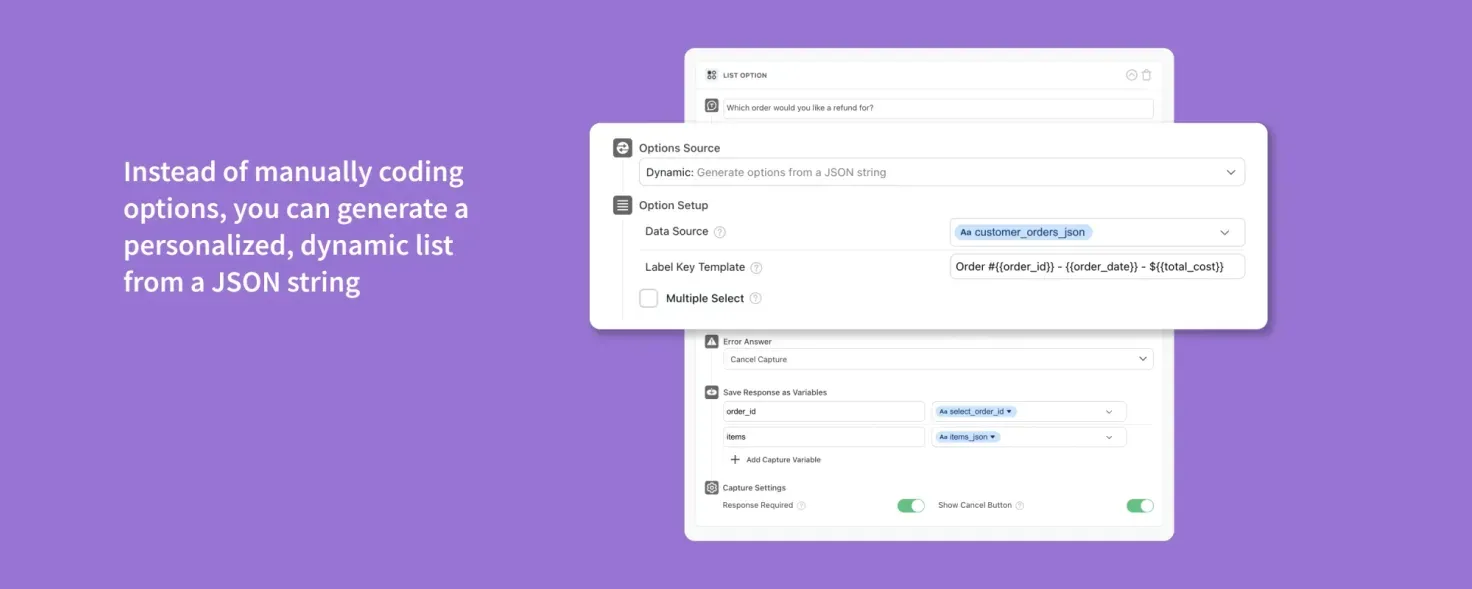
Now, let’s find out how this applies to common use cases across different industries.
It’ll come as no surprise that retail brands’ most common inquiries are that of the “Where is my order?” (WISMO) nature. With ecommerce dominating the retail space these days, a customer's ability to check their shipping status and track packages, report an order issue, make a quick change, and return items is the baseline. The easier you make this for them to do, the more confidence they’ll have that you’re the go-to brand that not only provides a great product, but is capable of meeting and exceeding their CX expectations. Automating these interactions allows brands to resolve issues in a matter of seconds — and without human intervention.
Everyone’s flocking to chatbots to make it happen, and this is where the importance of personalization comes in blazing. Imagine, without even starting up the conversation, you’re met with a greeting from the chatbot that gives you a list of clickable options of what you may be looking to do: product information, check order status, make a return. And upon an order update request, you’re instantly served with a list of your recently ordered items to select from. One click, and you’re accessing the shipping status and activating a return or exchange. Now that’s a brand experience we’d all come back to again and again.
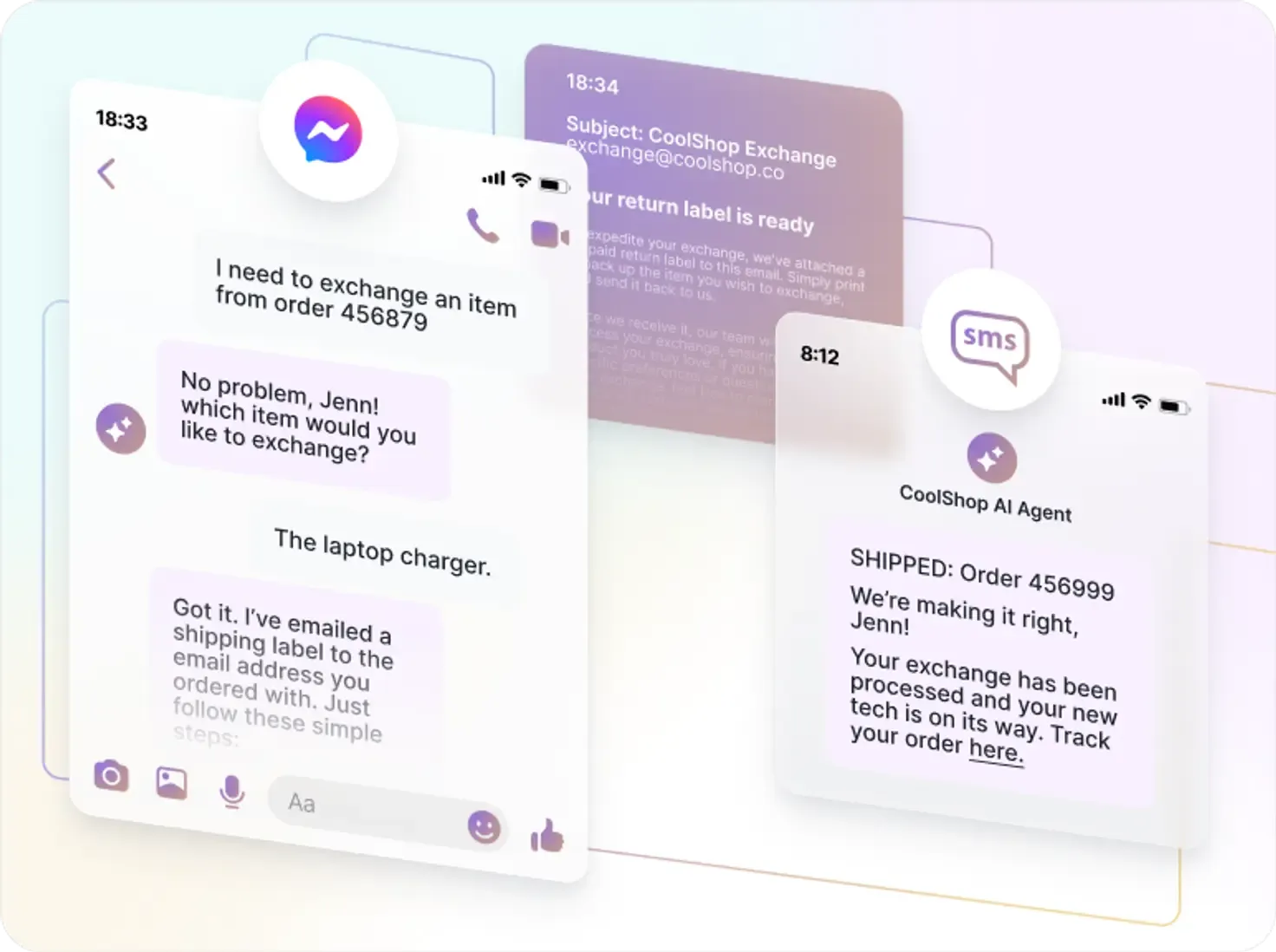
There’s nothing more frustrating than experiencing technical issues, especially when it comes to accessing entertainment. When you’re looking to add a new channel or streaming service subscription and the experience with the brand is complicated and convoluted, it’s enough to turn people away completely.
When your customers want to throw money your way, you’d better be ready.
Personalization can ensure you never miss a dollar, presenting the list of available channels ready to be added to a subscription based on the individual’s account. And when support is needed, the conversational AI can use the account history and customer data to troubleshoot in a pinch, with a list of devices logged into a streaming account to get device-specific support.
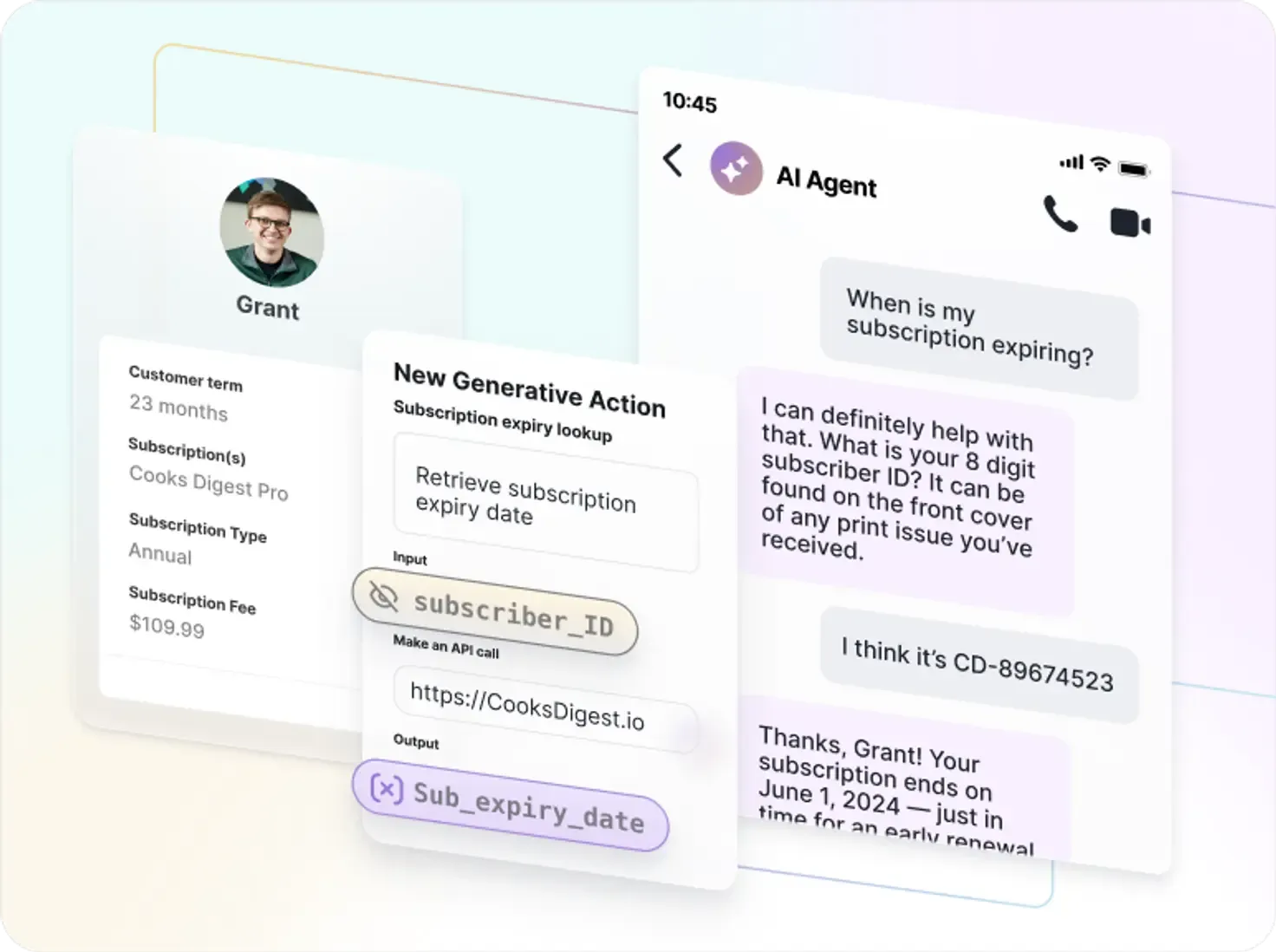
Understandably, people have little patience when their banking, investment, and financial information is difficult to access. Finance management, including account updates, transactions, and adding new services needs to be at the tip of your customers’ fingers — or they’ll quickly turn to a better brand that can provide this.
In-person banking has struggled to make personal connections with their customers in the past, which is why applying personalization in your automated interactions is crucial. People are looking to you to remember them — especially when it comes to something as important as their finances.
By leveraging customer conversational data and history, automation can actually be more personal than a trip to the bank. Customers can be verified immediately by the conversational AI, allowing them to quickly and efficiently resolve account issues, update their personal information, and activate new cards for immediate use. Through a simple, one-time automated interaction with conversational AI, they can transfer funds, make payments, and surface their recent transactions.
More, access to a customer’s past history, investment knowledge, and financial profile, brands can automate targeted, pre-qualified customers with recommended financial services and products, and then guide them step-by-step through the setup process.
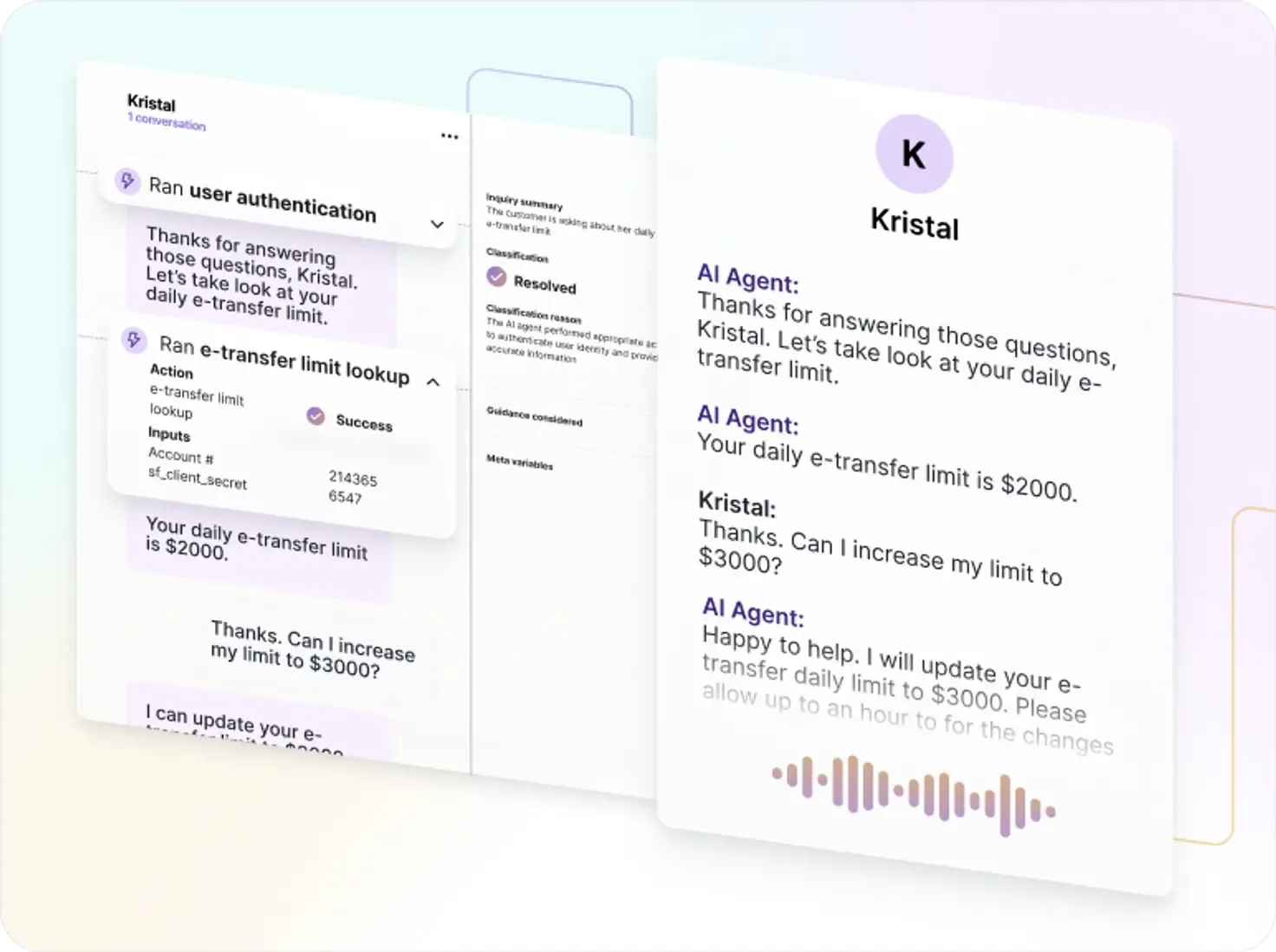
Customer support in the gaming industry is becoming more important than ever. The global reach of gaming brands requires specificity and personalization that allows brands to expand to new markets, reach players on more channels, and be available around-the-clock across time zones.
Personalization can be applied from front to end — from self-guided tours and walkthroughs, to bet and game play incentives, to quick access customer verification to update account details, make transactions, transfer funds, and withdraw winnings.
Expanding to new markets means you need to interact in new languages, and stay compliant with localized automation. With the right customer service automation platform, you can apply personalization to these demographics, deploying AI-powered conversations in multiple languages. Personalizing the experience to different geographies allows you to localize chat flows to the location of the player and serve accurate information.
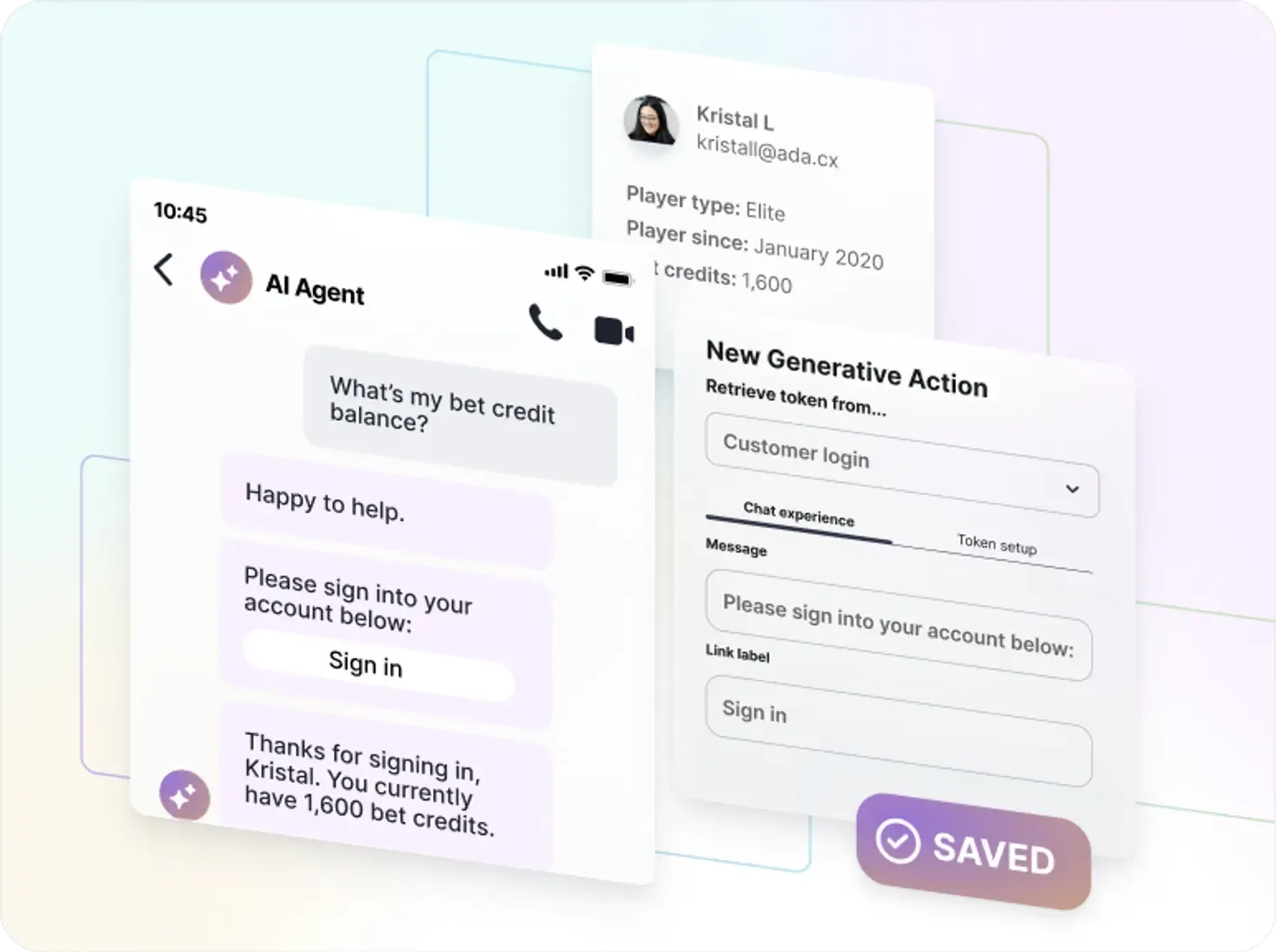
Whether a customer is looking to make a reservation for two or organizing an event for 200, an intelligent chatbot can make automated hospitality interactions effortless.
Restaurants and hospitality companies can use the customer’s past behavior or transactions to provide personalized service, with in-bot booking for tables and venues. And if their plans change, make it easy for them to cancel by recognizing their booking details right away. Because no one wants to wait on hold for the hostess.
Hospitality brands can also strengthen customer relationships by providing easy access to loyalty program management. Customers can quickly surface rewards and redeem points. Automated conversations can serve loyalty incentives and offers based on the customers’ history with the brand — instead of serving blanket loyalty opportunities to every person. This way, the customer receives personal rewards based on their past actions and purchases and feels appreciated on a more sophisticated level.
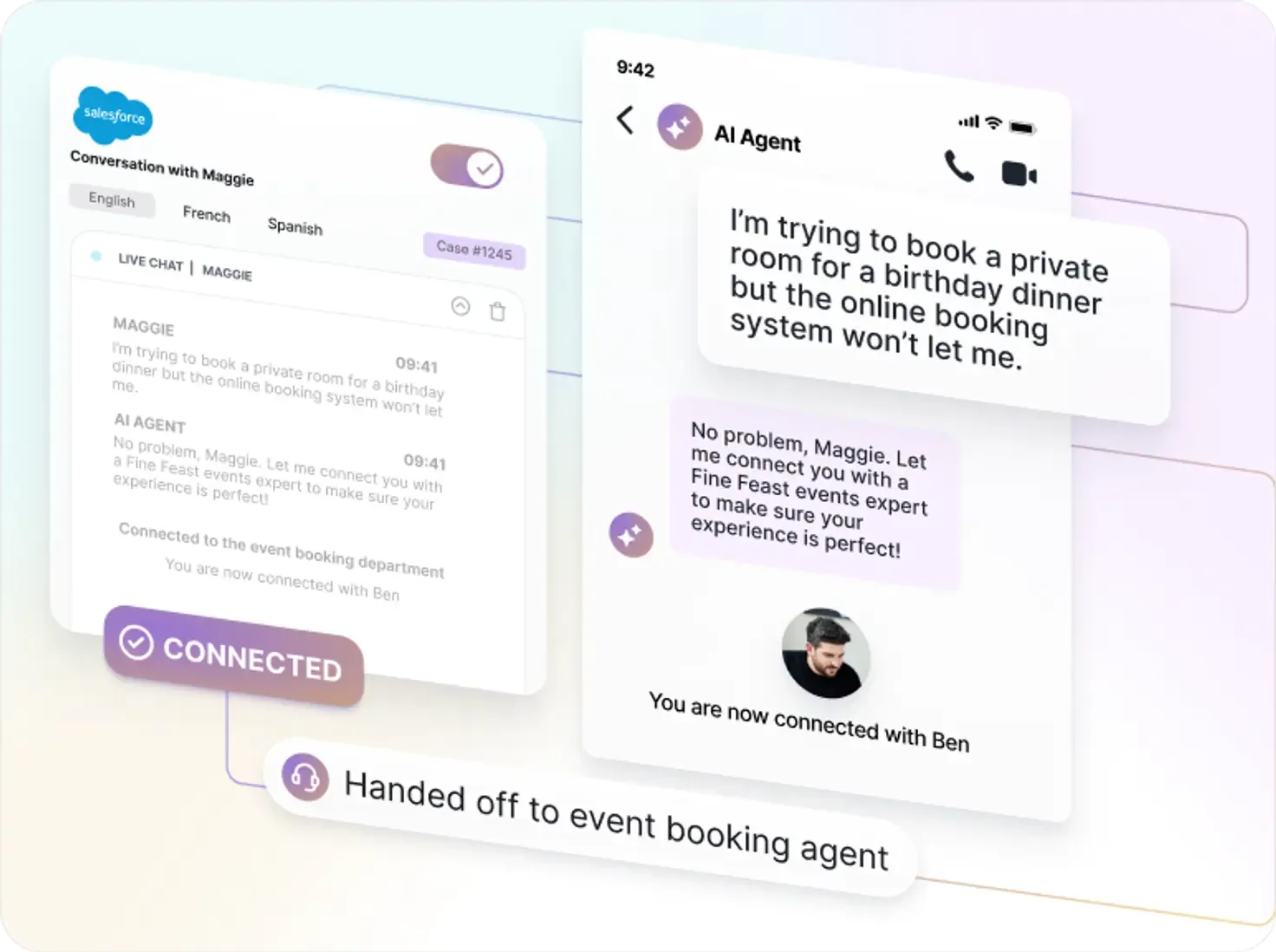
As customer expectations continue to grow, organizations in every industry need to rise to the occasion with tailor-made content and personalized automated conversations at scale. Our industry-leading customer service automation platform is full of purpose-built features to help you give your customers what they want: more understanding, and less effort.
What makes an AI Agent different from the typical chatbots you’ve used in the past? Download this guide to better understand the differences, and discover the success criteria to get the ROI you're looking for.
Get the guide